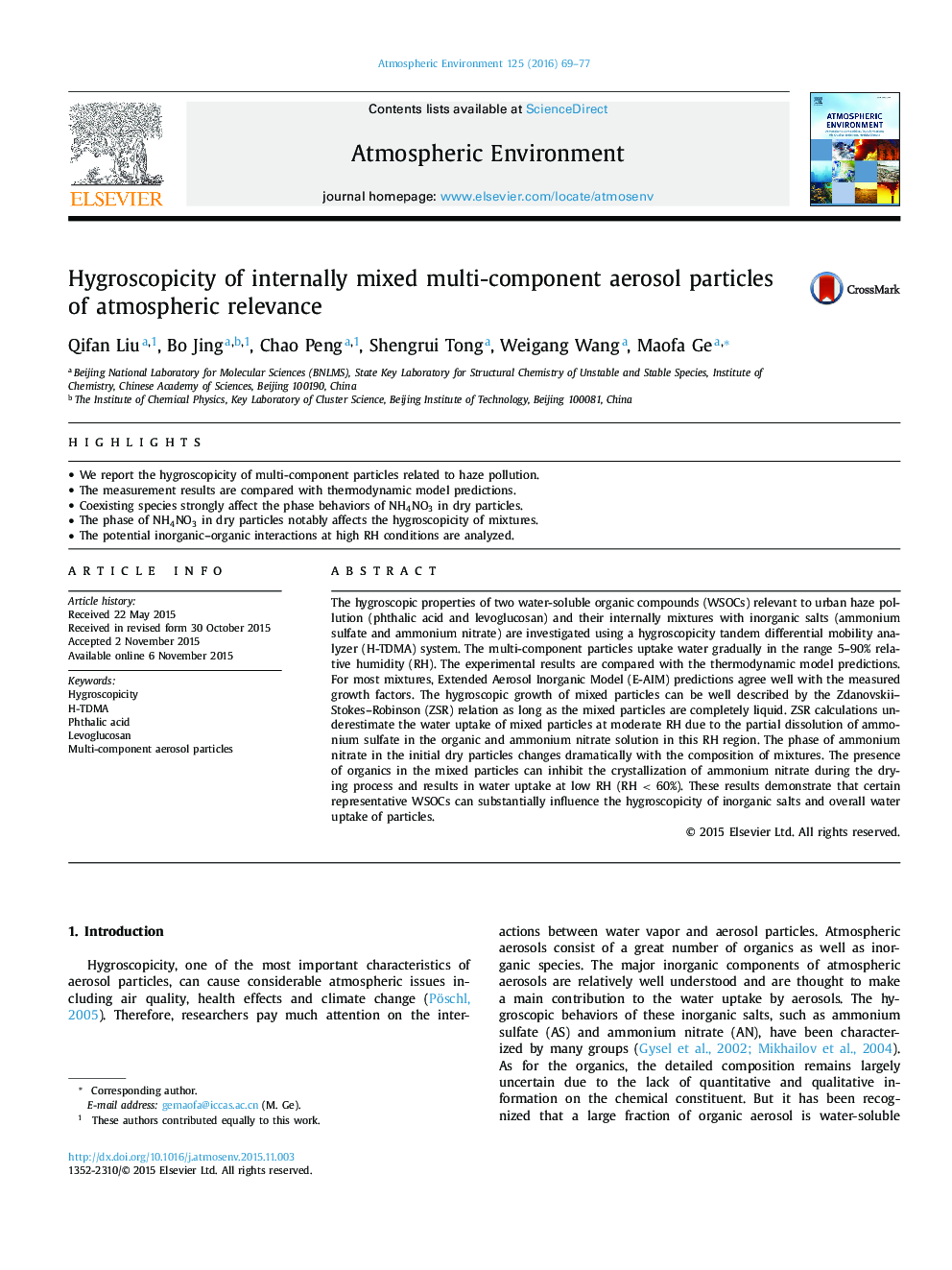| Article ID | Journal | Published Year | Pages | File Type |
|---|---|---|---|---|
| 6337229 | Atmospheric Environment | 2016 | 9 Pages |
â¢We report the hygroscopicity of multi-component particles related to haze pollution.â¢The measurement results are compared with thermodynamic model predictions.â¢Coexisting species strongly affect the phase behaviors of NH4NO3 in dry particles.â¢The phase of NH4NO3 in dry particles notably affects the hygroscopicity of mixtures.â¢The potential inorganic-organic interactions at high RH conditions are analyzed.
The hygroscopic properties of two water-soluble organic compounds (WSOCs) relevant to urban haze pollution (phthalic acid and levoglucosan) and their internally mixtures with inorganic salts (ammonium sulfate and ammonium nitrate) are investigated using a hygroscopicity tandem differential mobility analyzer (H-TDMA) system. The multi-component particles uptake water gradually in the range 5-90% relative humidity (RH). The experimental results are compared with the thermodynamic model predictions. For most mixtures, Extended Aerosol Inorganic Model (E-AIM) predictions agree well with the measured growth factors. The hygroscopic growth of mixed particles can be well described by the Zdanovskii-Stokes-Robinson (ZSR) relation as long as the mixed particles are completely liquid. ZSR calculations underestimate the water uptake of mixed particles at moderate RH due to the partial dissolution of ammonium sulfate in the organic and ammonium nitrate solution in this RH region. The phase of ammonium nitrate in the initial dry particles changes dramatically with the composition of mixtures. The presence of organics in the mixed particles can inhibit the crystallization of ammonium nitrate during the drying process and results in water uptake at low RH (RHÂ <Â 60%). These results demonstrate that certain representative WSOCs can substantially influence the hygroscopicity of inorganic salts and overall water uptake of particles.
